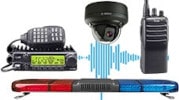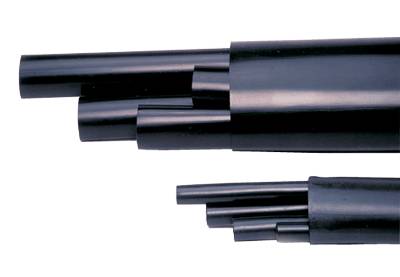- Special Offers
- Transceiver Radio
- Transceiver Accessory
- Antennas
- Antenna Accessory
- Cable
- Connector
- Installation Material
- Self Vulcanizing Tape
- Duct Tape
- Reflective Tape
- Adhesive Tape
- Shrink Tube
- Superglue
- Installation Tools
- Measuring Equipement
- Body Worn Camera
- Electrosmog
- Telephone
- Baby Monitor
- Fever Thermometer
- Radio Device
- Set-top Boxes
- Personal Protective Equipment
- Motorcycle Helmet Speaker
- Car Equipment
- Voltage Converter
- Dry Cell
- Battery
- Battery Charger
- Emergency Signal
- Amber Signal
- Sound Signal
- Light and Sound Signal Accessory
- Traffic Engineering
- LED Lamp
- Smart Home
- Mosquito Repellent Device
- Market - Other Products
- Discontinued Products
Pre-order (1)
Shrink Tube
The shrink tubing is used for electrical installation, antenna installation or any work with cables and wires. As the name suggests, the tube shrinks, and does so by heat. When heated, the diameter of this fitting material decreases, thus taking the shape of the cable or wire and almost fitting onto it, while forming a protective covering and also providing insulation. Read more...
Pre-order (1)
• Length: 1m
• Heat shrinkable plastic tube
• Color: Black
• Length: 1m
• Kompatibility: RG-58, Aircell 5, RG-59, H-155, RF-240, RG-6 és Aircell 7
• Color: Black
• Length: 1m
• Kompatibility: H-1000, LMR-400 and EcoFlex 10
• Color: Black
.
With its help, we can also protect our electrical wires and coaxial cables from chemicals or mechanical or weathering effects. It is important to mention that when the heat shrink tube is heated, only the diameter will be smaller, the length will not change, up to a maximum of 5%, and that is allowed.
What sizes of shrink tubes are available?
Shrink tubes are classified according to their wall thickness and stiffness. There are thin-walled, medium-walled and thick-walled shrink tubes. The thin-walled versions are classified as ST55, ST300, ST350. The thick-walled shrink tubes are the STH and STHA types. But we also distinguish between flexible, rigid and resin shrink tubes. They are available in a wide range of sizes, but the most commonly used are the RG-174 coaxial cable version and the 5mm shrink tubes for RG-58 cables.
How to choose the right size of shrink tube?
In all cases, you must first determine what kind of wire or cable you want to coat. Because this will determine to a large extent what type of conduit you need to use. But let's look at the details. The thin- and medium-walled versions, as well as flexible shrink tubes, are best used where it is not a problem if the wire or cable to be protected retains its flexibility. The recommended use for thick-walled rigid conduit is outdoors. Mostly used for protection against moisture and corrosion.
Last but not least, here is one of the most popular versions, the resin shrink tubing. This version is very resistant to external damage, moisture and chemical attack. This installation material also has excellent weatherproof properties. This is due, as its name suggests, to the resin coating, i.e. the resin layer on the inner wall of the shrink tube melts under the influence of heat and this coating melts perfectly onto the conductor to be protected, thus providing a watertight seal.
What material are shrink tubes made of?
The material used for shrink tubes is a cross-linked polyethylene blend, also known as polyolefin
What temperature range can shrink tubes be used in?
Shrink tubes need to be heated to between 90 and 125 °C to take the shape you want. Shrink tubes that have already been heat treated can retain their properties up to - 55 to 125 °C, which is the temperature range in which they can be used effectively.
What other properties should you look for when buying an injection pipe?
It is very important when choosing this type of fitting material to pay attention to the shrinkage ratio, which can be 2:1 or 3:1. This is important because, if you choose a variety with too thick a diameter, the pipe will not clamp perfectly onto the conduit to be coated. But fire resistance is also important, which can usually be in the range VW - 1. Elongation at break and electrical strength may also be important values.
So be sure to ask about these when buying a shrink tube. Also make sure that the shrink tube complies with the ROHS directive. What does this mean? This directive banned the use of lead, mercury, cadmium, hexavalent chromium, polybrominated biphenyls and polybrominated diphenyl ethers in both electrical and electronic equipment from 1 July 2006, meaning they cannot contain these chemicals.
Do we need special tools or expertise when installing radiant tubes?
The heat shrink tubes are threaded onto the cable or wire to be protected and then heated to the required temperature using a heat-emitting device, which may be a lighter, heat gun, heat gun or possibly an infrared heater. This is such a simple operation that it requires no skill, just a minimum of manual dexterity.
Shrink tubes can be used both outdoors and indoors. The right version will guarantee that the coated wire or optical cable is resistant to environmental, chemical, mechanical and electrical influences. Have a look at our range of shrink tubes and choose the right one for you in the DND Telecom Center webshop.


